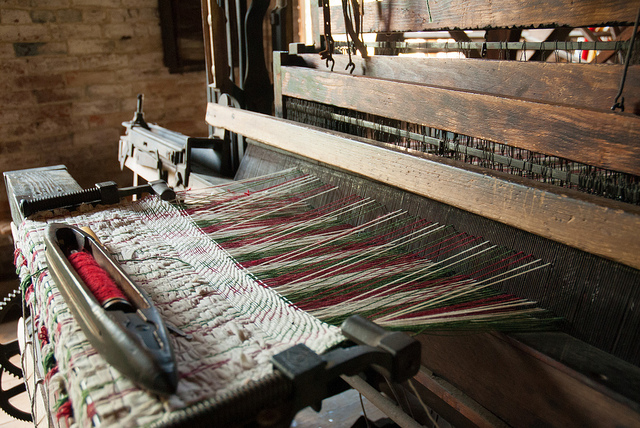at Watkins Mill State Park
NATURE AND THE 19th CENTURY
 As you scan the landscape, it's easy to see why Waltus Lockett Watkins decided to settle here. The land that makes up Watkins Mill State Park and the adjoining state historic site incorporates a large section of the Watkins home farm, including the original 80-acre tract upon which Watkins first settled.
As you scan the landscape, it's easy to see why Waltus Lockett Watkins decided to settle here. The land that makes up Watkins Mill State Park and the adjoining state historic site incorporates a large section of the Watkins home farm, including the original 80-acre tract upon which Watkins first settled.
The area is largely forested, as opposed to the open prairie with wooded creeks that made up the landscape when the Watkins family settled here 150 years ago. The wooded hillsides were once grazing areas for Watkins livestock, while the creek-side valleys of white oak, sycamore, bur oak, walnut and slippery elm once provided lumber for Watkins' mill and the many other buildings in the small community he created.
Today, Watkins Mill State Park offers excellent opportunities for camping, hiking, picnicking, fishing and swimming. The most rugged portion of the land was created by the cutting action of Williams Creek. The resulting small valley, Williams ravine, was never farmed but was left as a source of building lumber. The park system in the late 1960s cleared the area and created Williams Creek Lake, now the park's focal point.
The 100-acre lake features an accessible fishing dock and areas for launching boats and kayaks. Bass, catfish, crappie and sunfish are plentiful in the blue waters. The sandy swimming beach is a popular spot on a warm, sunny day, and a change house is available nearby.
One of the most popular activities in the park is riding on Paved Bicycle Lake Trail, which completely encircles the lake.The asphalt-paved tract is popular with walkers as well as bicyclists. Several picnic areas, with tables and barbecue grills, are located along the path. An open picnic shelter is located close to the lake and the bicycle path, making Watkins Mill State Park an ideal day trip from nearby Kansas City.
The park offers abundant wildlife and plants. Visitors regularly see white-tailed deer, wild turkeys and other native animals. The bird population is abundant with a wide variety of species, some of which are only seen in northwestern Missouri.
Though a popular day-use park, spending a night or more under the stars can really add to the experience. The park's wooded campground is near the south end of the lake and has two modern restrooms, hot showers, dumping station and coin-operated laundry.
 The state historic site, immediately north of the recreation area, is Watkins' legacy. Its main feature is the three-story woolen mill, the only 19th century textile mill in North America with its original machinery still in place. In fact, both mill and machinery are in such excellent state of preservation that the site is a National Historic Landmark, as well as a National Mechanical Engineering Historic Landmark.
The state historic site, immediately north of the recreation area, is Watkins' legacy. Its main feature is the three-story woolen mill, the only 19th century textile mill in North America with its original machinery still in place. In fact, both mill and machinery are in such excellent state of preservation that the site is a National Historic Landmark, as well as a National Mechanical Engineering Historic Landmark.
The site also preserves the Watkins farmstead. A visit to this living history farm offers a glimpse into 19th century agriculture, technology and family life. Period gardens and orchards featuring heirloom plants and seeds have been introduced along with various breeds of livestock, some now rare and endangered.
Tours are conducted daily through both Watkins Mill and the Watkins' house, where much of the original furnishings remain. Other buildings, including the summer kitchen, fruit dry house, icehouse and smokehouse, have been restored and are open to the public. A visitor center provides exhibits, artifacts and audiovisual programming interpreting one family's story of 19th century agricultural and industrial Missouri. The nearby 1871 church and 1856 octagonal school that the Watkins family attended also have been restored.
A tour of Watkins Woolen Mill State Historic Site is a fitting accompaniment to a day at Watkins Mill State Park. Both pay tribute to a man and the community he built.






